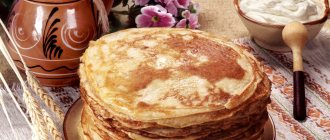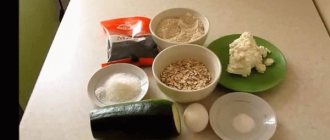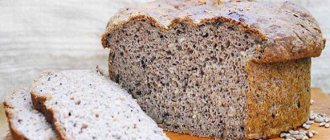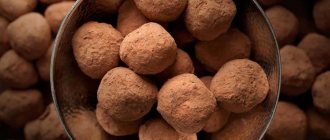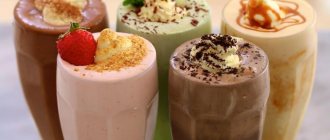Raspberries are very rich in vitamin C, macro- and microelements, and have great benefits for the body. It contains a large amount of flavonoids and phenols, which are valued for their pronounced antioxidant effect. Such components help increase the body's defenses. People who are on a diet need to know the calorie content of fresh raspberries per 100 grams in order to add them to the weight loss menu. Raspberries have many healing qualities, not only in the fruit, but also in the rest of the plant - foliage, branches and root system. Raspberries are a popular folk remedy used to treat colds. To do this, tea is brewed or a decoction is made from its leaves and berries. Oil made from raspberry seeds is used in cosmetology as a product that improves the color and quality of the epidermis.
Calorie content of fresh raspberries
Fresh raspberries are a low-calorie product. Its calorie content per 100 grams varies from 47 to 55 kcal, depending on the variety and degree of ripeness of the berries. Therefore, nutritionists often advise using it when creating their menu for those who want to lose excess weight or are trying to keep it the same.
Carbohydrates in raspberries are represented by sucrose, glucose and fructose. Californian scientists have proven that fructose is more dangerous for your figure than glucose and sucrose. Therefore, those who are watching their weight should avoid berries and fruits high in fructose. Raspberries contain approximately the same amount of glucose and fructose - about 3.9 g per 100 g of pulp. There is about 0.5 g of sucrose per 100 g of product. These are not high figures. For comparison, grapes, which are considered an undesirable food for weight loss diets, contain 7.8 g of fructose and 7.7 g of glucose. A pear contains about 6.5 g of fructose, and a persimmon contains about 5.5 g.
Important! The process of digesting fructose is more difficult for the body than sucrose and glucose, so it can be stored in fat if it is consumed in excess. In addition, fructose increases appetite, which often leads to overeating.
Assessing the amount of fructose contained in raspberries, the berries can be considered safe for the figure. Especially when you compare them with bananas, grapes and persimmons - fruits that nutritionists call the “enemies of slimness.”
The calorie content of fresh raspberries depends on the plant variety and the place where it grows. It is believed that red garden raspberries, which are grown in sunny summer cottages, are sweeter than the wild variety. Wild raspberries, growing in shady areas, do not have such a sweet taste, but are more aromatic.
Yellow raspberries have an even sweeter taste. It contains not only less anthocyanins, which determine the color of fruits, but also less organic acids. But it contains more sugars. The taste of yellow raspberries is softer and richer. The calorie content of ripe berries is 49 – 50 kcal per 100 g.
But black raspberries are considered the sweetest. This variety was bred in North America, so plants with black berries are less common in vegetable gardens and front gardens in our area, but they are gradually gaining popularity among Russian gardeners. The taste of black raspberries is higher than that of red and yellow ones. Its taste is sweeter, honey. The calorie content of black berries reaches the highest level - 55 kcal per 100 g.
Note: unlike red and yellow berries, black ones are denser, they do not fall off the bush when ripe, do not wrinkle and are stored longer after picking.
BJU
Fresh raspberries are a source of carbohydrates for the body. There is very little protein and fat in it. 100 g of fruit contains:
- 8.3 g carbohydrates;
- 0.8 g proteins;
- 0.5 g fat.
Thanks to the carbohydrates contained in the fruit, raspberries fill you well and ensure a long-term lack of hunger.
Raspberries - harm and contraindications
It is not recommended to consume too much raspberries if you have gout, kidney disease or gall bladder.
The reason for this is the high content of calcium oxalates. The substance can aggravate the course of the disease. In addition, studies have shown a relationship between drinking raspberry infusions and suppression of the pituitary and thyroid glands. This is due to the content of substances that regulate hormonal levels. Berries contain a lot of coarse fibers that can aggravate diseases of the digestive organs. An additional feature is the high content of vitamin K, which improves blood clotting. Therefore, people taking anti-blood clotting medications should seek medical advice before consuming the berries.
Often the danger comes from a simple lack of awareness about the medicinal properties of raspberries. For example, there are articles on the topic of cosmetology that describe the unique properties of raspberry seed oil - supposedly it is able to protect the skin from sun rays at a fairly high SPF level - 28-50. Investigations were carried out to identify the source of information. An article was found in the Journal of Food Chemistry from 2000, which talked about a team of scientists who conducted relevant research. However, evidence of the study's results was not found.
An additional factor in favor of the erroneous results is considered to be:
- Significant discrepancy between two SPF indicators without reasoning.
- Contradictory to other studies conducted by Indian and American scientists. New research has shown that many natural oils have a sun protection factor of about 1 SPF. The leader of the list was peppermint oil with a whopping 7 SPF.
Thus, if you apply raspberry seed oil to your skin before visiting the beach, there is a possibility of sunburn, since natural oils almost do not block mid-wave ultraviolet rays. In addition, the substance is completely transparent to long-wave ultraviolet rays, the danger of which does not immediately appear. Vitamin E, which raspberries are rich in, cannot stop UV rays. Despite the fact that this vitamin is often credited with the ability to block ultraviolet radiation, such an opinion is unfounded. Vitamin E only restores the effects of sunburn. However, the oil must be unrefined.
Pure vegetable oil is easily washed off with water and quickly absorbed by the skin. Therefore, even a harmless product becomes dangerous when non-existent properties aimed at protecting the body are attributed to it. For example, the misconception about the ability of raspberry oil to block ultraviolet rays can cause skin to burn in the sun. Therefore, it is better to use proven means, the effectiveness of which has been repeatedly confirmed.
The effect of raspberries on the figure
Considering the calorie content per 100 grams of berries, raspberries can be considered a dietary product. And if you take into account the amount of vitamins and microelements that have a beneficial effect on metabolism in the body, it can even be called a product that promotes weight loss.
But this does not mean that you can eat it in unlimited quantities. Moderation is important in everything. For an adult, the daily norm is considered to be 70–100 g of berries; for children, a portion weighing up to 50 g will be sufficient.
Important! The benefits and harms of raspberries for your figure primarily depend on the number of berries eaten. Even low-calorie berries can cause weight gain if you eat too much of them.
Raspberry diets
There are many variations of raspberry diets that promise quick results. These are both so-called express diets and mono-diets. The first are based on a sharp reduction in calories due to the introduction of raspberries and other low-calorie foods into the diet. Such diets allow you to lose up to 3 kg of weight in 2 – 3 days.
Mono-diets have even more stringent restrictions. When following the raspberry mono-diet, you are allowed to consume only one product - raspberries. You can drink water, green tea. As a rule, the duration of a mono-diet does not exceed 3 days. During this period you can lose up to 5 kg.
If express diets, the diet of which has a reduced caloric intake, are considered ineffective, and when returning to the usual diet, the weight returns “boomerang”, then mono-diets are considered completely dangerous to health. Excluding protein foods and fats from the diet is stressful for the body. The menu should be balanced. If a mono-diet lasts more than 3 days, there is a high probability of harming your body.
In order for weight to decrease without the body feeling a lack of micronutrients, the diet must be composed in such a way that it contains proteins, fats, and carbohydrates. To lose weight, it is enough to create a small calorie deficit. To do this, you should eat raspberries at one of your meals, for example, lunch, or replace with them the sweets that were present in the diet before the diet.
A sample weight loss menu might look like this:
- breakfast: omelet with cheese and herbs, a slice of bread with butter;
- snack: raspberries with milk;
- lunch: soup with meatballs and rice;
- dinner: fish baked with vegetables.
Raspberries raise or lower blood pressure
The peculiarity of the red berry is to lower blood pressure and normalize heart rate. Raspberries promote sweating and remove excess fluid from the body. That is why the product is useful for people with hypertension. You can eat fresh berries or prepare a variety of drinks with the addition of raspberry leaves. This remedy strengthens the body, has a positive effect on the condition of organs, and improves blood circulation. Thanks to the vitamin C content, the immune system is strengthened.
Calorie content of dried raspberries
Deprived of moisture, freeze-dried raspberries are often used in cooking. It is added to baked goods, desserts, cereals, dairy products, and compotes and jelly are made from it. It has a rich raspberry flavor and is even sweeter than a fresh berry.
But more often, dried raspberries are used for medicinal purposes. Decoctions and infusions are prepared from it, tea is brewed, using its healing properties to fight colds, strengthen the immune system, improve heart function and the condition of blood vessels.
During drying, the berries lose about 90% of their moisture, so dried raspberries have a higher calorie content than fresh fruits. 100 g of dried berries contains about 240 kcal. If raspberries are not just dried, but pre-boiled in sugar syrup, the calorie content of the berry can increase by one and a half to two times.
If the drying conditions are met, many beneficial substances are retained in the berries, so freeze-dried raspberries are not only tasty, but also a healthy product . It is rich in vitamins C, A, E, it has a lot of potassium, magnesium, salicylic acid, and fiber.
Properties of raspberry leaves
Raspberry leaves and branches have strong medicinal properties that have been known since ancient times. The benefits of the plant are equally high in fresh and dried form. Decoctions and various tinctures are prepared from the branches; these products are used in the form of lotions that are applied to problem areas.
Decoctions of the leaves are recommended to be used to treat the following ailments:
- colds: decoctions help eliminate the flu, they relieve severe cough, bronchitis, inflammation of the upper respiratory tract;
- skin diseases;
- hemorrhoids;
- severe pain in the stomach area;
- heartburn;
- stomach bleeding.
The use of medicinal products from branches and leaves has a positive effect on the general condition; they strengthen the immune system and improve the condition of the walls of blood vessels. In addition, they normalize blood clotting and reduce the risk of developing atherosclerosis.
Video
Frozen berry
The easiest way to preserve raspberries in the autumn-winter period is freezing. Frozen berries, thanks to the “shock freezing” technology, retain most of the beneficial properties and taste of fresh raspberries. Freshly frozen raspberries can be consumed as an independent product or added to various dishes and drinks, for example, you can prepare a cottage cheese casserole with berries or make raspberry compote.
The calorie content of frozen berries is 40 - 45 kcal. As is the case with fresh berries, the calorie content of frozen raspberries depends on the degree of ripeness and the type of product used for preparation. The sweeter the fresh berry, the higher the calorie content of frozen raspberries.
Most often, one of 2 methods of freezing raspberries is used:
- freezing whole berries: spread the raspberries in an even layer on a flat surface and put them in the freezer;
- freezing raspberries pureed with sugar: the berries are combined with granulated sugar and ground with a wooden masher, after which the puree is laid out in plastic or glass containers and placed in the freezer.
Depending on how many ingredients were used for the preparation, raspberries frozen with sugar can have a calorie content several times higher than berries frozen without sugar.
For example, if 100 g of granulated sugar was added to 300 g of berries, frozen raspberries will have a calorie content of about 135 kcal per 100 g of product. This recipe uses a 3:1 ratio. If more sugar is added, the calorie content of frozen raspberries will be even higher.
Without sugar, as a rule, whole berries are frozen. If raspberries are pureed, it is advisable to add granulated sugar to it, so that in the future the puree will be more convenient to use as a filling for pies, a component of desserts and creams.
The importance of raspberry root for the human body
Raspberry roots, like the berry and leaves, have the same powerful healing effect on the body. But the concentration of useful components, vitamins, and other biologically active substances is higher. Remedies from the roots are good for exacerbation of hemorrhoids, which are accompanied by severe inflammation and bleeding.
Depending on the health problem, the use of raspberry roots may vary slightly:
- For bronchial asthma. 50 grams of roots must be crushed, poured with a liter of water and boiled for an hour. Afterwards the broth is cooled and filtered. You should take 1-2 tbsp at a time. spoons, used 5-8 times per day;
- Inflammation of the lymph nodes. Raspberry root, fir paws and natural honey are placed in the container. All components are mixed in equal proportions. Afterwards everything is placed on low heat and boiled for 8 hours. Take 1 tbsp at a time. spoon. You need to use the product up to 5-6 times a day.
Raspberry jam and marmalade
The salicylic acid contained in raspberries makes raspberry jam a well-known folk remedy for colds. But those who prefer to be treated with traditional methods and are simply big fans of homemade preparations should know that the calorie content of raspberry jam is much higher than that of fresh berries. Of course, a spoonful of jam won’t do much harm to your figure, but if you eat it in large quantities, you can quickly notice unpleasant changes in the mirror.
How many calories are in raspberry jam is influenced by the recipe according to which it was prepared. The most popular recipe among housewives uses a 1:1 ratio, that is, 1 kg of granulated sugar is taken for 1 kg of berries. The berries, ground with sugar, are boiled, placed in jars and rolled up. The calorie content of raspberry jam prepared according to this recipe is about 220 kcal per 100 g of delicacy.
If raspberries and sugar are added in other proportions, the calorie content of the product will change. In different recipes it can vary from 200 to 350 kcal per 100 g. The calorie content of a spoonful of jam can be from 10 to 20 kcal.
In addition to traditional raspberry jam, raspberry jam is considered a popular homemade preparation for the winter. Its preparation differs from jam in that the berries are pre-chopped, so the texture of the product is more uniform and viscous. Depending on the quantity of raspberries and sugar added to the jam, its calorie content can range from 200 to 300 kcal. Accordingly, the calorie content of a teaspoon of jam will be from 10 to 15 kcal.
Another well-known recipe for preparing raspberries for the winter is the so-called “raw jam”. From “raw jam” you can prepare raspberry tea during the cold season, which has diaphoretic properties, strengthens the immune system and speeds up recovery.
The difference in its recipe is that the berries, ground with sugar, are not boiled, but in their raw form are placed in jars and stored in the refrigerator. The benefits of this delicacy are much greater than those of a traditional preparation, but the calories are the same.
Useful and healing properties
If you eat a handful of raspberries every day, a person’s well-being will improve.
Raspberries are a berry that has many benefits for the human body:
- relieves inflammation in the joints, so people with arthritis and arthrosis should eat raspberries;
- strengthens the heart muscle, cleanses blood vessels, removes cholesterol plaques, stabilizes blood pressure. Raspberries can be used as a preventative for heart disease;
- effectively cleanses the intestines of harmful and toxic accumulations;
- facilitates the course of female menopause;
- lifts the mood;
- strengthens the nervous system, fights stress;
- improves brain functioning and enhances memory;
- improves the functioning of the pancreas, stabilizes blood sugar;
- serves as a preventive measure for a sharp increase in insulin, so it can be included in the diet of diabetics and obese people;
- normalizes reproductive function, reduces the likelihood of developing infertility in males;
- stabilizes hormone production;
- Used to treat colds, it works best when combined with honey and milk.
Constant consumption of raspberries increases the body's immunity and serves as a preventive measure for the development of atherosclerosis and neoplasms.
Please note: The healing properties of raspberries are preserved even in berries that have been dried or frozen. Compote and raspberry jam can dull pain and eliminate fever. It is recommended to drink raspberry tea when you have a cold, but you should brew it for no longer than 3 minutes.
Raspberry juice, fresh jam with sugar will have the same benefits for the human body as raspberries just picked from the bush. But the calorie content of the dishes will be significantly higher. Raspberry seeds are a widely used component in cosmetology as an ingredient in a lot of creams, scrubs, and facial oils. It is the oil that relieves inflammation on the skin.
Video
Raspberry leaves
The leaves of the red berry are also rich in nutrients that are beneficial for humans. All valuable components in the foliage are preserved, even if it is dried. A decoction and tea based on raspberry leaves is used as a remedy for colds, reduces fever, activates sweat production, relieves inflammation and strengthens the immune system. The leaves are used to stop bleeding and speed up the wound healing process.
Please note: A decoction of raspberry leaves is used as a medicine to treat the throat during a sore throat, clears the face of acne, has a beneficial effect on the gastrointestinal tract, relieves inflammation and improves immunity.
The foliage is an integral component of ointments used to treat skin diseases and rashes.
A decoction of the leaves is prepared to treat diseases:
- ARVI;
- gastritis and stomach ulcers;
- inflammation of the gastrointestinal tract;
- conjunctivitis;
- hemorrhoids;
- colitis;
- stomatitis and various diseases of the oral cavity.
A decoction of raspberry leaves is used to rejuvenate the skin and strengthen hair. Fermented raspberry leaves make the tea drink more aromatic and tasty, but as a result of fermentation, many nutrients are lost. Therefore, the finished drink is no longer so healthy.
Raspberry branches
Raspberry branches also have a healing effect, which has been known since ancient times. Fresh and dried branches from which decoctions and tinctures are prepared will be equally useful. In the future, ready-made products are used to create lotions on damaged parts of the body.
A decoction of raspberry branches helps get rid of:
- colds and flu;
- bronchitis and cough;
- various skin diseases;
- hemorrhoids;
- stomach pain;
- heartburn;
- bleeding in the stomach.
Like other parts of this plant, the branches help increase immunity and strengthen the walls of blood vessels, improve blood clotting, and reduce the likelihood of developing atherosclerosis. Thanks to decoctions, you can cope with depression, neurasthenia, and stress. Ready-made tinctures have an analgesic and bactericidal effect.
Video
Raspberry root
Raspberry root contains the same nutrients, vitamins, micro- and macroelements as the leaves, branches, and fruits, but in much greater concentration. With the help of the root of the plant, hemorrhoids with bleeding can be cured most effectively. The underground part of the plant helps to cope with bronchial asthma and relieve inflammation of the lymph nodes.
Please note: To treat asthma, you will need a decoction consisting of raspberry roots and water in a ratio of 25 g per 0.5 liter. You need to drink it gradually, several tablespoons 5-8 times throughout the day.
To relieve inflammation of the lymph nodes, you need a decoction of raspberry root, fir and honey, which is cooked over low heat for 8 hours. You need to drink 5-6 tablespoons during the day.
Recipes for dietary dishes with raspberries
You can and should eat raspberries without harming your figure. But sweet jams and preserves are not suitable for this purpose. You know how many calories are in raspberries with sugar! To benefit from your health and figure, use our dietary recipes.
Raspberry ice cream
Delicious and healthy ice cream can be made without sugar or fat. All you need is 2 ingredients – raspberries and banana. The banana is peeled and broken into several small pieces. Raspberries can be used either fresh or frozen. The calorie content of frozen raspberries differs slightly from fresh fruits to a lesser extent, but not significantly, which does not greatly affect the total number of calories in the dessert.
Bananas and raspberries are placed in the freezer for 3 - 4 hours, until completely frozen. Then the frozen banana is pureed using a blender. Frozen fruit produces a puree that is soft in consistency and tastes like ice cream. Then raspberries are added to it and the whole mass is thoroughly crushed again with a blender. Ice cream can be topped with a teaspoon of raspberry syrup or decorated with chocolate shavings.
Raspberry trifle
Trifle is a dessert served in a glass. There are many recipes for trifles. During the season of fresh raspberries, you should definitely prepare a curd-raspberry trifle. For it you will need:
- for cream: soft low-fat cottage cheese (120 g), sweetener, vanillin;
- for the layer: 50 g fresh raspberries;
- for the crust: 1 egg, 20 g of rice flour, a pinch of salt, sweetener, baking powder, 2 teaspoons of low-fat sour cream.
The ingredients for the dough must be mixed thoroughly. A cupcake is baked from it in the microwave or oven. Soft cottage cheese is mixed with sweetener and vanillin. After cooling, the cake is cut into small cubes, take a glass and put the ingredients into it in layers: curd cream, sponge cake, berries, again cream, sponge cake and berries on top.
Note: if you don’t have fresh raspberries, you can replace them with ice cream. But the berries lose their shape after defrosting, so it’s better to mix them with curd cream. The calorie content of frozen raspberries is almost the same as that of fresh berries, so the replacement will not affect the healthfulness of the dessert for your figure.
Benefits for weight loss
Fresh raspberries are an excellent way to lose weight. To lose excess weight, it is enough to consume half a glass of berries three times a day. You need to eat it half an hour before meals.
What are the benefits of raspberries for weight loss:
- It has strong fat burning properties. This is due to the content of lipolytic enzymes.
- Has a low glycemic index. Thanks to this, when consuming the berry, blood sugar does not increase.
- Has a positive effect on intestinal activity and the digestive process.
- Has a strong diuretic effect. Thanks to this, excess fluid is removed from the body and swelling is relieved.
Fresh berries promote enhanced removal of excess fluid from the body, and along with it, toxins, wastes, and salts are eliminated. When losing weight, it is recommended to include fresh and frozen berries in your diet. But it should be consumed without sugar or other sweeteners.
Video
Content of microelements in raspberries
- Iron. An essential component of blood and the process of feeding body cells with oxygen. Participates in the production of red blood cells and enzymes. Prevents the development of anemia. The absorption of iron increases when the body receives sufficient amounts of vitamin C.
- Cobalt. Participates in enzymatic reactions, metabolic processes, the synthesis of vitamin B12, the functioning of the liver, nervous system, and pancreas. Component of inositol and choline. It is also necessary for proper blood circulation, bone tissue development, relieving fatigue, strengthening the immune system, blood vessels, and cell rejuvenation.
- Zinc. Increases sperm activity. Controls hormonal balance in women and men. Prevents diseases of the prostate gland, joints, increases resistance to viral diseases. Strengthens the immune system. Reduces blood sugar levels and participates in the production of insulin. Improves vision, digestion, muscle function. Has a general positive effect on the nervous system. Destroys toxins.
- Fluorine. Accelerates the absorption of iron. Necessary for the formation and strengthening of the skeleton, hair, nails, teeth. Participates in hematopoiesis. Increases the body's defenses. Helps remove heavy metal salts and other toxic substances from the body.
- Molybdenum. Participates in the processes of iron absorption, fat and protein metabolism, uric acid production, enzyme catalysis, hemoglobin production, and almost all metabolic processes. Maintains healthy teeth and gums. Improves iron absorption. Neutralizes toxic substances, therefore it alleviates the body's condition in case of poisoning. Has antioxidant properties.
- Copper. Necessary for nerve fibers and endocrine glands. Improves the functioning of the digestive, endocrine, and immune systems. Stimulates hemoglobin production and increases iron absorption. Participates in the growth and development of cells, collagen synthesis, strengthening of bones, blood vessels, skin, metabolism of proteins and carbohydrates. Protects cells from premature aging.
- Manganese. Has a beneficial effect on the nervous system. Promotes bone development, prevents various diseases of bones and joints. Strengthens the immune system. Improves the metabolism of fats, insulin, vitamins A, B, C. Normalizes digestive processes and the functioning of the sex glands. Accelerates tissue regeneration. A preventive remedy for diseases of the nervous system, thyroid gland, eyes, diabetes, atherosclerosis. Actively participates in hematopoiesis. Neutralizes toxic substances, lowers blood sugar levels, protects cells from oxidative processes.
Curious facts about raspberries
The healing properties of raspberry berries are known to almost everyone. However, there are several little-known facts:
- Due to its good taste, raspberries are added to many medicines.
- The leaves of the plant can be used to make delicious tea. This drink is aromatic and healthy due to its vitamin C content.
- Garden raspberries began to be grown only in the 16th century.
- Raspberries are considered a natural antidepressant. The product contains substances that improve mood and help fight a depressed state of mind.
Botanical description of raspberries
Common raspberry (Rúbus idáeus) is a subshrub; species of the genus Rubus of the Rosaceae family.
Raspberries grow in sunny places in clearings, forests and shrubs. Widely grown in gardens.
Common raspberry is a subshrub with a perennial rhizome, from which biennial replacement shoots up to 1.5-2.5 m high develop.
The rhizome is woody, sinuous, with many adventitious roots forming a powerful branched root system. It lies in a layer of 10-30 cm, individual roots can penetrate to a depth of 80-90 cm. The roots can spread up to 2-3 m in width, but most of them are located within a radius of 40-60 cm from the center of the bush. On the adventitious roots, buds are formed that are capable of producing daughter plants - root suckers. Their underground part develops its own root system. The next year, replacement shoots emerge from the buds on the rhizome of the offspring, and a new raspberry bush begins to develop independently, without losing contact with the main plant. The lifespan of the rhizome is about 8-10 years.
Stems are erect. The shoots of the first year are herbaceous, green with a bluish coating, covered with thin, usually dense thorns. In the second year, the shoots become woody and turn brown; They dry out immediately after fruiting. New replacement shoots grow from the same root the next year.
The leaves are oval, alternate, petiolate, with 3-7 ovate leaflets, pubescent with small hairs, dark green above, light green below. The leaves are most developed in the middle third of the shoot. If there is insufficient light in the lower part of the shoot, the leaves fall off in mid-summer.
The flowers are white, about 1 cm, collected in racemes, located on the tips of the shoots or in the axils of the leaves. The petals are shorter than the calyx lobes. In the middle zone, raspberries bloom in June-July. The flowers are bisexual, so single-varietal plantings give a good harvest. However, cross-pollination of different varieties gives better results in terms of quality and quantity of berries.
The fruits are small, hairy drupes that grow together on the receptacle to form a complex fruit. The adhesion of the drupes to each other and to the fruit stem is a feature of the variety. The technological properties of the berries are related to this: if the grip of the drupes is weak, the berries easily fall apart. The fruits are red (pink to burgundy), but there are yellow and black varieties (blackberry-shaped).
Fruits usually appear in the second year. In the first year, two flower buds are formed on the replacement shoots in the axils of the leaves, from which fruit branches grow in the second year. In the southern zone, fruits also grow on shoots of the first year, but in mid-autumn.
Remontant varieties of raspberries
Remontant varieties of raspberries (from the French “remonte”, denoting varieties that replenish the main assortment of raspberries), adapted to the conditions of the middle zone, are capable of producing a good harvest here on the shoots of the first year.
ru.wikipedia.org/wiki/%D0%9C%D0%B0%D0%BB%D0%B8%D0%BD%D0%B0
Counting calories
A wide variety of dishes are prepared from raspberries. Having a low energy value, it gives them lightness, adding a sweet, fresh note.
From the fruits of this plant the following is prepared:
- sauces for porridges, cottage cheese and curd dishes;
- preserves, jams and marmalade;
- cocktails and fresh juices;
- sauces for meat.
Raspberries do not greatly increase the calorie content of the final dish. It all depends on the form in which the berries will be used: fresh, frozen or dried.
Fresh raspberries
The energy value of different varieties may vary slightly. The wild forest varieties are considered the “lightest”. According to nutritionists, varieties with red fruits are slightly less caloric than yellow ones.
On average, the calorie content of 100 g of fresh raspberries is 46 kcal.
Those who prefer to enjoy it without any additives, in its pure form, can easily calculate the number of kcal received:
- 1 berry weighs 5-8 g and contains 2.3 - 3.7 kcal;
- 1 tbsp. spoon = 20 g raspberries = 9.2 kcal;
- glass 200 ml = 140 g = 64.4 kcal;
- in 250 ml = 180 g = 82.8 kcal.
From these data it is clear that a snack in the form of a large glass of raspberries will not harm your figure. During a diet, you can allow yourself such a tasty and healthy dessert in almost unlimited quantities.
Frozen raspberries
The disadvantage of this berry is that it cannot be stored fresh for a long time. Freezing is the best option to preserve the product for a long time. After defrosting, the fruits do not look as presentable as fresh ones. They produce a lot of juice, become wrinkled, and lose their shape. But the most important thing is that they retain almost all useful substances and do not change the energy value.
The calorie content of 100 g of frozen raspberries is 46 kcal.
In this form, the berries can be used in the same way as fresh ones, for cocktails, porridge, and cottage cheese. Very often it is added to baked goods, including dietary ones.
It is worth considering that when frozen, raspberries become denser. This means that the mass of the product will increase.
It turns out that:
- 1 tbsp. spoon = 40 g defrosted = 18.4 kcal;
- 200 ml glass = 200 g = 92 kcal;
- 250 ml = 320 g = 147.2 kcal.
Dried raspberries
When dried, the water from the fruit evaporates. Accordingly, the composition is made concentrated, the content of vitamins and microelements per 100 g of product increases. The energy value also increases.
Per 100 g of such raspberries there are 241 kcal.
Moreover, one dried berry will contain the same 2.3 - 3.7 kcal as a fresh one.
Despite the increase in energy value, dried fruits are also considered dietary . The thing is that the glycemic index increases slightly during drying: from 25 to 35 units. Products with this indicator do not cause a spike in insulin. This means that the energy received with them will be spent and not stored in reserve.
Dried raspberries are used:
- for preparing decoctions and tinctures;
- added to tea;
- as a natural sweetener in cooking.
Jam
There are several recipes for raspberry jam. They differ in the amount of sugar and cooking time.
The most common are the following:
1. Classic raspberry jam . For this preparation, take an equal amount of fruit and sugar. The mixture is prepared for about one hour and then distributed into sterilized jars. The energy value of such jam will be 223 kcal per 100 g. Despite the long heat treatment, this sweet, aromatic preparation will retain a large amount of valuable substances. In fact, this will allow you to use the treat for colds for medicinal purposes in winter.
2. Five-minute jam. This workpiece received this name after a short cooking time. Just bring the mixture of berries and sugar to a boil, boil for five minutes, and you can put it in a sterile container. Much less sugar is also used, at the rate of 1 kg per 2 kg of fruit. The result is a much healthier product than classic jam. However, storing it is more difficult. Due to the small amount of preservatives, it is better to find a place for jars of treats in the refrigerator or cellar. The energy value of “five minutes” is 163 kcal per 100 g.
Product calorie analysis
SHARE OF BZHU IN CALORIES
Ratio of proteins, fats and carbohydrates:
Knowing the contribution of proteins, fats and carbohydrates to calorie content, you can understand how well a product or diet meets the standards of a healthy diet or the requirements of a certain diet. For example, the US and Russian Departments of Health recommend 10-12% of calories come from protein, 30% from fat and 58-60% from carbohydrates. The Atkins diet recommends low carbohydrate intake, although other diets focus on low fat intake.
If more energy is expended than it is received, the body begins to use up fat reserves, and body weight decreases.
Silicon
is included as a structural component in glycosaminoglycans and stimulates collagen synthesis.
Cobalt
is part of vitamin B12. Activates enzymes of fatty acid metabolism and folic acid metabolism.
Copper
is part of enzymes that have redox activity and are involved in iron metabolism, stimulates the absorption of proteins and carbohydrates. Participates in the processes of providing oxygen to the tissues of the human body. Deficiency is manifested by disturbances in the formation of the cardiovascular system and skeleton, and the development of connective tissue dysplasia.
Molybdenum
is a cofactor for many enzymes that ensure the metabolism of sulfur-containing amino acids, purines and pyrimidines.
You can see a complete guide to the healthiest foods in the “My Healthy Diet” app.
Nutritional value of food product
- a set of properties of a food product, in the presence of which the physiological needs of a person for the necessary substances and energy are satisfied.
Vitamins
, organic substances required in small quantities in the diet of both humans and most vertebrates. Vitamin synthesis is usually carried out by plants, not animals. A person's daily requirement for vitamins is only a few milligrams or micrograms. Unlike inorganic substances, vitamins are destroyed by strong heat. Many vitamins are unstable and are “lost” during cooking or food processing.
It is not in vain that they write poems, sing songs, and tell legends about raspberries. This magical red berry has long won the hearts of people with its healing properties and sweet taste.
Biological features of remontant raspberries
In the spring of each year, new shoots grow from the underground part of the bush of remontant varieties, and by autumn they produce a crop of berries. By winter, the upper fruit-bearing part of the shoot dries out. In the second year, fruit branches with berries are formed on the remaining part of the shoot, as happens in non-repairing varieties. In remontant varieties, it is possible to obtain a harvest from both annual and biennial shoots, but this leads to a decrease in yield and a deterioration in the quality of the berries. Therefore, it is recommended to harvest only on annual shoots, removing them before the onset of frost. An annual crop of remontant raspberry varieties eliminates the problem of winter hardiness and winter drying of shoots. Read more about cultivating a remontant annual crop here >>.
Raspberry sherbet
You can make raspberry sorbet from frozen raspberries - this is both a dessert and a great way to cool off in the heat.
Raspberry sherbet
To prepare 8-10 servings you need:
- 600 g raspberries
- 200 ml drinking water
- 250 g sugar
- seeds of half a vanilla pod
- 2 tbsp. l. lemon juice
- Sort the raspberries. Place the berries in a food processor, add water and puree.
- Pass the puree through a fine sieve to remove the pits. Add sugar, vanilla seeds and lemon juice. Stir until the sugar is completely dissolved.
- Pour the mixture into a food container and refrigerate for at least 3 hours. Every 30 minutes. Remove the container from the refrigerator and stir the mixture with a whisk.
This material is for general information only and should not be construed as a substitute for medical advice from your physician or other health care professional.
conclusions
Raspberries are a delicious sweet berry that has many beneficial and healing properties for both men and women. It has a rich chemical composition and low energy value. Therefore, raspberries are used by nutritionists to create menus for weight loss, and in cosmetology to eliminate shallow wrinkles, as well as strengthen hair and cleanse problem skin. Regularly eating raspberries will strengthen the heart muscle, increase immunity, cleanse the body, and rid it of excess fluid.
